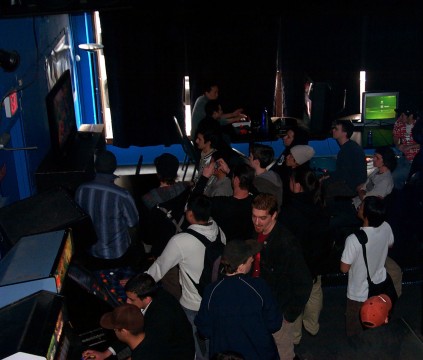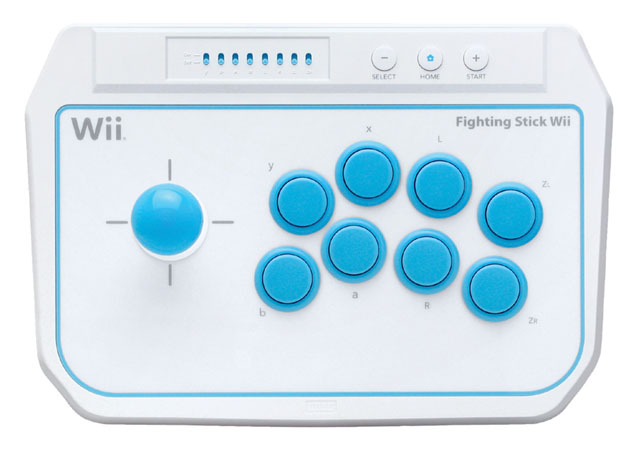
If you’ve been up-to-date on your Virtual Console, you’ve probably noticed that Nintendo outgrew its initial library of NES, SNES, N64, Sega Master System, Sega Genesis and TurboGrafx-16 games a little while back– in late 2007, Nintendo added SNK’s Neo Geo console to its Virtual Console lineup (first three games released: Art of Fighting, Fatal Fury: King of Fighters and World Heroes, all from SNK or Alpha Denshi), and in early 2009, the Commodore 64 and Virtual Console Arcade launched as well. (MSX appeared, meanwhile, only on Japanese Wii consoles.) Nine consoles in all have launched outside Japan, and with simply that fact, any Wii gamer should theoretically be able to satisfy any retro fix.
 But as lofty as this assumption may be, and as quick as Nintendo was to point out all the triumphs of its Virtual Console during Wii’s launch, Nintendo’s only had a measure of apathy for its Virtual Console as of late. Game releases have slowed down to barely a trickle, and even for people paying attention, sections like the Virtual Console Arcade barely register, considering it consists mostly of games that can be found on other systems, such as Altered Beast and Ninja Gaiden. Even Neo Geo, much-heralded when added to Nintendo’s Virtual Console, only has twenty-three titles in all– with many of them being two-dimensional fighters. (Fortunately, that two-dimensional quality usually only translates to the graphics.) For gamers craving the arcade experience, Nintendo’s Virtual Console hasn’t exactly been pleasant.
But as lofty as this assumption may be, and as quick as Nintendo was to point out all the triumphs of its Virtual Console during Wii’s launch, Nintendo’s only had a measure of apathy for its Virtual Console as of late. Game releases have slowed down to barely a trickle, and even for people paying attention, sections like the Virtual Console Arcade barely register, considering it consists mostly of games that can be found on other systems, such as Altered Beast and Ninja Gaiden. Even Neo Geo, much-heralded when added to Nintendo’s Virtual Console, only has twenty-three titles in all– with many of them being two-dimensional fighters. (Fortunately, that two-dimensional quality usually only translates to the graphics.) For gamers craving the arcade experience, Nintendo’s Virtual Console hasn’t exactly been pleasant.
Yet gamers who crave the arcade experience really shouldn’t have expected that much in the first place from Virtual Console. After all, even if we had the legendary Street Fighter II: World Warrior (which we do– just not on arcade), it’s still Street Fighter II on a console, as opposed to an arcade. It’s almost a “you can put the console in the arcade, but you can’t put the arcade in the console” sort of deal– the differences are just too stark.
More than enough people out there extol the virtues of arcade gaming over console gaming– almost as many people who combat PC- and console-based gaming, if not more. And really, these arguments are not without merit, at least when it comes to head-to-head gameplay. After all, while consoles have gained repute with pro gamers like Fata1ity, Poison, or even speed gurus like the Zelda-based TSA, arcades have spawned regional rivalries and sprawling championship series, and have historically outranked consoles in terms of preferred play when it comes to fighters, despite arcade limits like price and time. The reasons are fairly self-explanatory, for the most part– in an arcade, says Ryan Harvey, players duel literally head-to-head, across from each other, as opposed to the usual side-to-side battles prevalent in console games. (Or worse: the impersonal online fights that accompany so many games now.) That sense of highly fueled competition exists in games that aren’t even fighters, with score tables like those in Dance Dance Revolution or BeatMania constantly keeping even the best players on the edge, who, by the way, often develop into nigh-mythological status, as Tomo Ohira did with Street Fighter II. With that in mind, it’s no wonder the Virtual Console can’t– or at least doesn’t –keep up with that aspect of arcades– such intense, personal competition simply can’t be replicated on a console that only one or two people probably play regularly. Even with voice chat enabled, not being able to see your online opponent changes more than anyone might think.

Hori’s official arcade-quality joypads bring at least a little of the arcade spirit home.
Outside of the intense competition that arcade fuels, though, there’s also the camaraderie that comes with it. One only needs to look at Tomo Ohira, the Southern Californian Street Fighter II champion, who discussed with fellow mythological Arcadian Mike Watson how Watson would “talk a lot of ____, [and that he] was kind of an ___hole,” while retaining a sense of teamwork and friendship forged only through intense battle. Street Fighter IV legends Daigo Umehara and Justin Wong, meanwhile, famous for their participation in one of the most well-known comebacks in any arcade game, constantly jab at each other in their interviews, despite their almost tangible respect for each other as competition. And though the west has its fair share of competition already, with matches in Evo and PAX, any match against a player from Japan or Korea is almost invariably billed as a match between East and West– a clear dichotomy of regions implying both competition and camaraderie at the same time. Rarely does any console enjoy this kind of celebration (or condemnation), and though sometimes companies make attempts to remedy that, they rarely, if ever, succeed.
Unfortunately, even if it jam-packed its Virtual Console with arcade titles of the highest caliber (or Calibur), Nintendo would nevertheless find it impossible to emulate the actual arcade. Certainly, it could still take some steps towards getting there. Online leaderboards, for example, would give players some small measure of competition, especially if they sent a notice to their Wii inboxes every time somebody knocked them off the boards (a la Audiosurf). More arcade games that people would actually play and compete via, meanwhile, is probably a more obvious answer. In the meantime, it looks like people looking for an arcade experience are simply going to have to find a decent arcade. They may be slowly dying out (though that’s an article for another day), but they’re still out there– just prepare to spend a lot of quarters.




 ShareThis
ShareThis







Awesome article, but I must dash for I am running so late.
Can your next article be on teaching me how to actually play Street Fighter? I suck so bad..